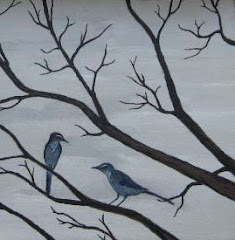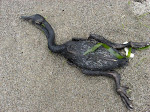
Last week I visited to New Mexico for a small amount of field work. I flew into Albuquerque Monday afternoon and picked up my rental vehicle, which was much larger than I had requested. From there I drove four hours to Silver City, the most isolated college town I have ever visited.
 I spent the next two days visiting field sites in the beautiful Cliff-Gila Valley.
I spent the next two days visiting field sites in the beautiful Cliff-Gila Valley. During the last year, I have been comparing data I collected along the Middle Rio Grande with data collected by colleagues along the much smaller Upper Gila River. Last week was the first time I had seen this stretch of the river, so I was quite interested in the composition of its riparian trees.
During the last year, I have been comparing data I collected along the Middle Rio Grande with data collected by colleagues along the much smaller Upper Gila River. Last week was the first time I had seen this stretch of the river, so I was quite interested in the composition of its riparian trees. Like the Rio Grande south of Albuquerque, huge cottonwoods are found along the Gila.
Like the Rio Grande south of Albuquerque, huge cottonwoods are found along the Gila. Unlike the Rio Grande, the Gila also supports large sycamores like the ones above.
Unlike the Rio Grande, the Gila also supports large sycamores like the ones above. And boxelders, members of the maple family that grow in a variety of sizes and shapes. Boxelder forms a dense sub-canopy in the riparian forests, making the upper Gila area one of the most productive habitats for the endangered southwestern Willow Flycatcher.
And boxelders, members of the maple family that grow in a variety of sizes and shapes. Boxelder forms a dense sub-canopy in the riparian forests, making the upper Gila area one of the most productive habitats for the endangered southwestern Willow Flycatcher. I also hiked upstream of the valley in the Gila Wilderness Area. This area is so large and remote that wildfires are often allowed to burn unchecked, further diversifying the habitat.
I also hiked upstream of the valley in the Gila Wilderness Area. This area is so large and remote that wildfires are often allowed to burn unchecked, further diversifying the habitat. Numerous monsoon thunderstorms moved through the area during my stay, possibly sparking new fires.
Numerous monsoon thunderstorms moved through the area during my stay, possibly sparking new fires.















































